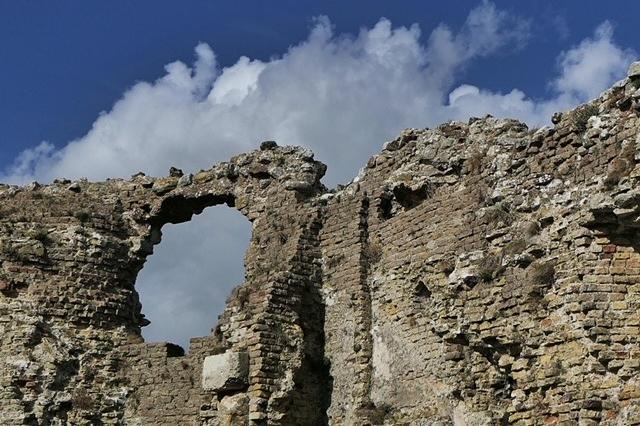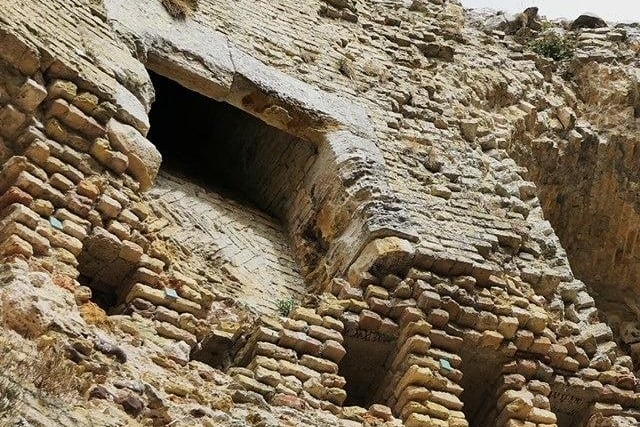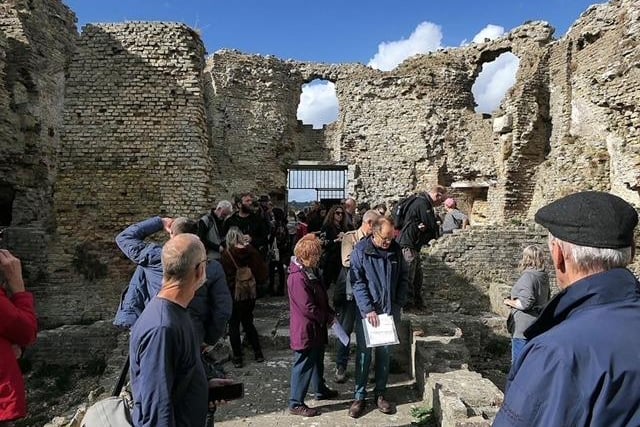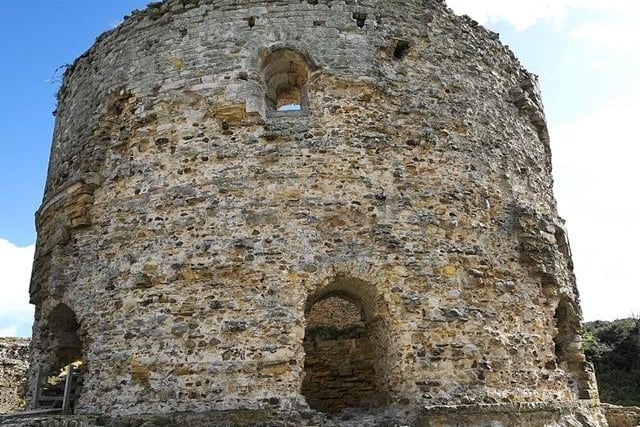The ruins are in a sheep field, close to the sea and nature reserve, between Winchelsea and Rye. The castle would built by Henry VIII as an artillery fort to defend the ports of Rye and Winchelsea from possible attacks by the French and Spanish.
It is managed by English Heritage and Sussex Wildlife Trust. People were able to visit the interior of the castle in a guided tour on the first Saturday of the month from August to October. But the survey found that that the masonry inside had deteriorated, making it unsafe.
There is no vehicular access to Camber Castle, which is reached by a one mile walk on footpaths from Rye. People are still able to walk up to the ruin an view it from the outside.
A statement from English Heritage said: “Camber Castle will remain closed to the public this summer. Unfortunately the masonry has deteriorated substantially. We apologise for any inconvenience this may cause and will endeavour to keep people updated.”
The first fortification on the site was a small, round artillery tower, constructed by Henry between 1512 and 1514. It was rebuilt and extended over the next year under the direction of the Moravian engineer, Stefan von Haschenperg. The results were considered unsatisfactory and further work was carried out from 1542 to 1543, at great expense, to rectify the problems. The result was a large, concentric artillery fort, with a central keep, surrounded by four circular bastions and a circular entrance bastion, built from stone and brick.
The finished castle was initially equipped with 28 brass and iron artillery guns and a garrison of 28 men, commanded by a captain. It may have seen service in 1545 when a French fleet attacked the coast, but its operational value was short lived as surrounding harbours began to silt up, becoming unusable by shipping, and the coastline receded away from the fort.
The castle still remained operational up until 1637, when it was closed by King Charles I. With the outbreak of civil war in 1642, much of the fortification was dismantled by Parliamentary forces to prevent it being used by the Royalists.
The ruins became a popular spot for picnics in the 18th and 19th centuries, and was painted by J. M. W. Turner.
Sid Saunders took these pictures, which show the unstable masonry, during a visit to Camber Castle in October 2022.
Have you read? Meet the affectionate Hastings cat that no-one wants
Have you read? Hastings Old Town Carnival procession in 65 pictures

1. Camber Castle
Camber Castle Photo: Sid Saunders

2. Camber Castle
Camber Castle Photo: Sid Saunders

3. Camber Castle
Camber Castle Photo: Sid Saunders

4. Camber Castle
Camber Castle Photo: Sid Saunders